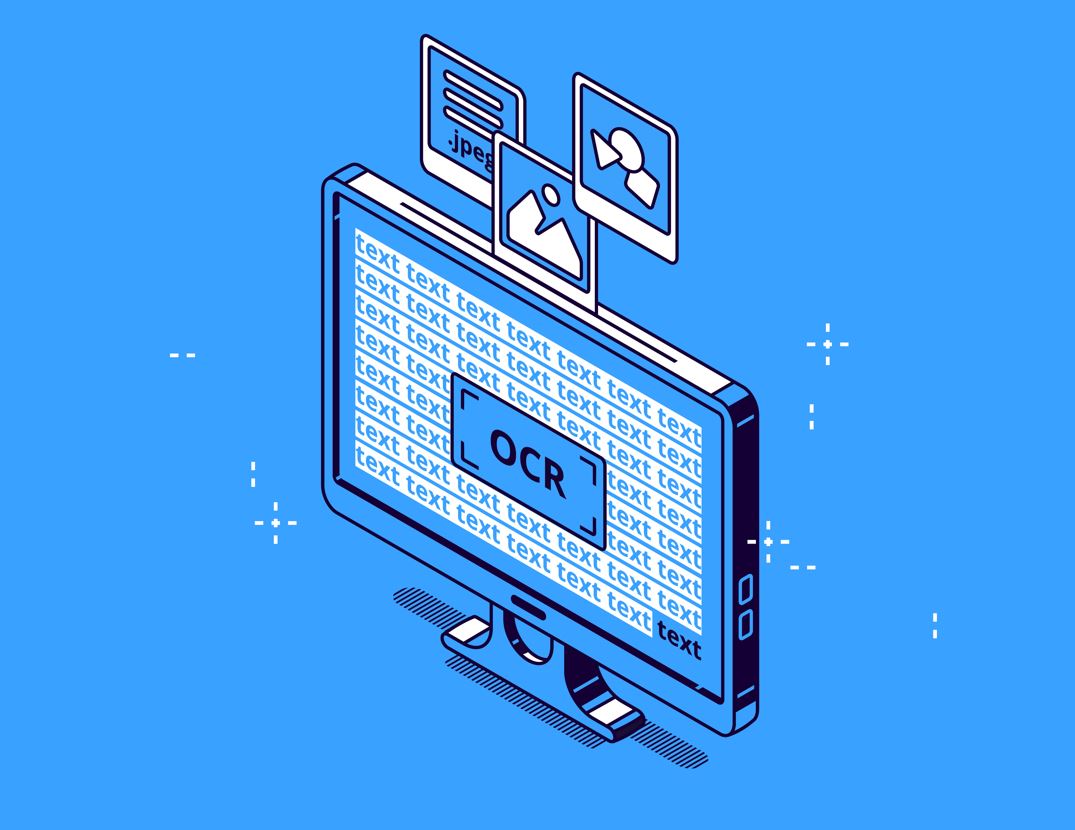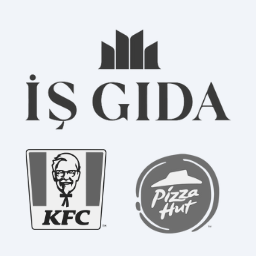OCR for Images
What is OCR?
According to Wikipedia, OCR (Optical Character Recognition) is the transfer of written documents that are not in the computer environment in digital form that can be edited to the computer environment through special scanners or normally scanned images by some special programs. The read image or document is saved as a text file. One of the most well-known applications in our daily life is automatic license plate recognition. Photographs of the license plates of the passing vehicles are taken and immediately passed through the OCR application and entered into the system.
While each Optical Character Recognition system works slightly differently depending on the developer and purpose, some common file processing steps can be applied to all types of OCR software:
File Processing Steps
De-skewing (skewing), line-removal (line or block removal), binarisation (separating blocks), segmentation, script recognition, and data capture are the most common methods used in the preprocessing step to eliminate defects during character recognition.
This step refers to the separation of each character and the recognition of all pixel characters and spaces. Processing each character allows the system to recognize certain sets of characters as words. Generally, recognition is based on two techniques:
- Matrix matching
- Feature extraction
The software improves the accuracy of the data after it has been processed. The accuracy of the final data and output will depend on two factors at this step: the OCR system’s complexity and the initial data’s complexity. For example, typically simple OCR systems store standard fonts in their libraries, and if the document contains different fonts or handwritten text, simple OCR with standard fonts stored in its library cannot assign appropriate metadata to it. If the document contains complicated and non-standard characters, advanced OCR technologies are required.

OCR with Robotic Process Automation
Let’s get a bit more into Robotic Process Automation, the technology where OCR is widely used, now that we’ve learned a little about OCR.
Robotic Process Automation, or RPA, is a technology that allows people to use a “digital workforce,” or programmed robots, to perform business processes more efficiently. Time-consuming, repetitive, monotonous, and periodic tasks are frequently associated with RPA. OCR and RPA are two technologies that may work together to automate a company’s daily operational processes.
How Do RPA and OCR Work Together?
While OCR is used to recognize and read information from various documents such as printed or scanned files, invoices, contracts, documents with subtitles on them, RPA helps to distribute information accurately to specific programs or systems – CRMs.
Document Processing Phases
Typically, Optical Character Recognition is used for highly structured documents, while in conjunction with RPA it can process and analyze unstructured files of various formats. In addition, RPA software robots can adapt to various scenarios and improve data collection and analysis processes that OCR alone cannot. So what steps does a document processing process involve?
1. Description:
Type of document; legible writing form, handwritten form, scanned writing form, etc. definition as
2. Classification:
Classification of documents such as invoices, contracts, signed printouts according to the defined format
3. Reading:
Character-based document reading
4. Action/Assimilation:
Performing result-based actions such as setting reminders, sending notifications, storing data in a structured format
Examples of Document Types Requiring OCR
- Tax Forms
- Legal Cost Invoices
- Medical Coding / Transcription Diagnostics
- Prescriptions
- Procedures
- Request Processing
- Policies
- Scoring Tables
In RPA, the data or information in the document detected with the help of the OCR library can be transferred to the needed systems or programs. The information or data transferred in these systems is inserted into the workflow according to the need in the business process and becomes output by the purpose of the business. In this way, OCR and RPA act together, in other words, we use OCR in RPA. In summary, non-digital or digitally difficult information can be scanned, read, and processed with the help of OCR. In the continuation of this process, which runs in RPA, this information turns into data and becomes usable in digital media for the relevant unit. This is one of the greatest examples of digital transformation.
 While there are advantages to OCR processes, there are also sensitive issues that need attention. One of them is that the information in the received document or image is missing or does not correspond to the desired structure. It harms the process’s flow. In cases when the scanned file is utilized at critical decision points, it would be useful to activate different control points to avoid such situations.
While there are advantages to OCR processes, there are also sensitive issues that need attention. One of them is that the information in the received document or image is missing or does not correspond to the desired structure. It harms the process’s flow. In cases when the scanned file is utilized at critical decision points, it would be useful to activate different control points to avoid such situations.
Benefits of Kronnika RPA
Both OCR and RPA are solutions that aim to improve the efficiency of business processes. Combining these two technologies can bring even better results for your business and add more value to your workflows without the risks associated with inappropriate cross-system data storage and entry.
Save Time
Delegate your time-consuming tasks to Kronnika Digital Assistants. Save time for both your employees and your business.
Reduce Your Cost
Start using Kronnika robots without paying the Robot License fee and reduce your cost.
Increase Your Output Quality and Accuracy
Improve the output quality of your work and grow your business with more accurate results thanks to faultless robots.
Increase Employee Satisfaction
Speeds up your employees’ business processes by facilitating hard-to-complete tasks.
Clients Using Kronnika RPA Solutions
Due to our rapid growth as a company, the workload of our staff was increasing every year. With Kronnika RPA support, we conducted an analysis of our processes, identified shortcomings in our processes during the analysis, and made improvements. By transferring many of our processes to robotic automation, we not only reduced the workload of our staff but also prevented potential human errors in the processes. As Gage Group, we aim to be a leading company actively using RPA applications in the industry by ensuring that 80% of our internal processes are carried out by robotic automation.

We have been using Kronnika robots in our processes for about 1 year. We have transferred a workload that takes an average of 2-3 hours per day to robots. In this way, we can benefit from our human resources much more efficiently. In addition, the error rate is zero in the processes we transfer to robots. Moreover, this resulted in significant time savings and increased productivity. We thank Kronnika for enabling us to reach such a service as a SME level business.

It was a wonderful experience working with the Kronnika team to develop RPA projects for many of our applications compatible with our digitalization strategies and will allow us to do more agile work. The projects we carried out together have made our work much easier, and we’ve developed almost error-free processes with a 99 percent success rate in many of our automated processes. I also believe that İşGıda has been taken one step further with the time savings provided by Kronnika robots. Kronnika, thank you!

In this conjuncture where competition increases its speed and acceleration, the necessity of working efficiently and effectively continues to maintain its reputation. To fulfill these requirements, as Bereket companies, we continue on our way to preserve our competitive position and gain superiority by digitalizing. We have come a long way in our digital adventure by incorporating RPA technology into the processes of our organization. With the support of our Kronnika business partner, we have covered significant distances in terms of acquiring and making use of RPA technology for our companies. It was a pleasure to meet and work with you. We’d like to thank the Kronnika team for supporting us in our digitalization journey.
As Canlı Automotive, we are a company that likes to invest in technology. We met Kronnika while looking for a solution to simplify the standard operations that tire our employees. We reduced the daily workload of at least 3-4 hours to less than half an hour with robotic process operations. Working with Kronnika allowed us to reduce the errors caused by the lack of attention in the processes to zero and boost our employees’ motivation for their job. We are grateful to the Kronnika team, who managed the seemingly complicated processes with great professionalism.

We started our first RPA project with Kronnika in December 2020. Today, we have robots that save us a lot of time in our work and processes, which can respond differently according to the demands of our policyholders from different channels, register new customers to the CRM for first-time requests, and assign the request to a specialist from our sales team.
We would like to thank the Kronnika Team, for which we can always get support and contribute to our business development processes with their innovative ideas.

Take Your Business To The Next Level with Kronnika RPA
Get started with Robotic Process Automation in days by completing three simple steps!














